Features of floor cladding with tiles
A few basic nuances:
- Depending on the shape of the floor tiles, there are several layout options that allow you not only to achieve an unusual design, but also to visually adjust the size of the space, for example, highlight the herringbone laying, diagonally, with an offset, and others.
- When choosing grout, take into account the shade of the tile product, but the contrast solution also looks no less original. For example, wood look finishes work better with tone-on-tone grouting to achieve the illusion of a seamless, seamless surface. If the finish is decorated with bright patterns, then they will look even more colorful in combination with a beige or milky grout.
- From a practical point of view, it is advisable to choose models for the floor in not too light shades or a coating with interesting patterns, since dust and dirt will be less visible on this surface.
- To visually expand a small room, you should select a light cladding that adds light and space to the room.
Types of tiles
Depending on the composition and external design, this finish is subdivided into the following varieties:
- Ceramic. Differs in the widest scope of application, has an extraordinary variety of models, colors and patterns. The tiles are made by obtaining a base, painting and firing. The disadvantage of these models is fragility.
- Porcelain stoneware. It is a very durable and reliable product, which contains clay, quartz and feldspar. Porcelain stoneware has a luxurious and sophisticated appearance and a fairly high price.
- Quartz vinyl. It is a new and modern species with several layers in its structure. It is made of quartz sand and fiberglass, has high-quality soundproofing and fireproof properties.
Currently, there are a large number of tile finishes that differ in design, texture, color, technological features and production method.
Sizes and shapes of floor tiles
The most popular shapes are square and rectangular. Octagonal models or hexagonal products resembling honeycombs have a more refined and interesting look.
If the floor has slight irregularities and imperfections, a fine mosaic will be an excellent solution, which not only creates a very bright and unusual design, but also does not crack from the differences in the floor surface.
In the photo, the interior of the kitchen with the floor multicolored tiled facing of a rectangular shape.
Intricate shapes in the form of triangles, hexagons, octagons or even products with rounded edges can be used to achieve a unique and perfect floor covering.
The photo shows a white floor tile in the shape of an octagon in the interior of the kitchen.
Floor tile colors
The most popular color scheme.
White
Makes the room much brighter, more comfortable, brings air and freshness to it. White cladding is great for decorating a room with any size and purpose.
The photo shows the interior of the kitchen with rectangular floor tiles, made in white.
Black and white
This color combination is versatile and always has a very stylish and presentable look.
In the photo, floor tiles in black and white in the interior of the hallway.
Black
It looks really luxurious, endows the atmosphere with special showiness and high cost, while forming a rather strict and classic interior.
The photo shows the bathroom interior with square floor tiles in black.
Gray
A calm and neutral gray finish can be harmoniously combined with almost any color and, depending on the shade, muffle or vice versa, it is beneficial to highlight them.
Blue
Blue or blue finishes have a very attractive appearance, endows the space with sophistication, style and adds a certain mystery to the atmosphere.
Beige
The cladding in discreet warm beige shades is in perfect harmony with any design and provides an opportunity to give the atmosphere the necessary coziness.
In the photo there is a bathroom decorated with beige tiled flooring.
Green
It can have a wide variety of shades, for example, light green, lime, olive, lime green, deep malachite or emerald. Such a color scheme significantly refreshes the interior space and fills it with gentle coolness.
Photo of tiles in the interior of rooms
Examples of the use of tiling in the design of premises.
In the kitchen
Floor tiles blend seamlessly into the interior and blend perfectly with ceilings and kitchen furniture. The main thing is that the style solution is uniform and harmonious.
In the bathroom
The floor in the bathroom requires a special material for its design, since the humidity in this room is increased and sudden temperature changes occur regularly. Floor tiles are considered one of the most optimal coating options.
In the hallway or corridor
This cladding allows you to achieve a rational, thoughtful and creative design of the corridor. The tile will not only delight with its aesthetic appearance, but will also serve for a long time.
In the living room
To create a more luxurious and respectable living room design, marble-like flooring or no less spectacular cladding with imitation of laminate or parquet is used, outwardly indistinguishable from an analogue.
An original solution can be achieved by combining products of light and dark shades, in a checkerboard pattern. In the decoration of the hall, both matte and glossy polished floor tiles, which undoubtedly become an independent decorative element, will be appropriate.
The photo shows the interior of a modern living room with rectangular floor tiles in a light shade.
On the balcony
In the design of a balcony or loggia, you can use high-quality ceramics, since it has certain technical characteristics that allow you to use it even on the street. Thus, it turns out to achieve, not only practical coverage, but also to embody very extraordinary design ideas.
In the photo there is a balcony with light beige tiled flooring.
In the bedroom
Here it is better to choose tile products that are pleasant to the touch and have a velvety rough texture; it will also be appropriate to use a heated floor or use carpets, this will deprive the room of some coldness.
In the bedroom, the floor is laid out as a single-color cladding, and models with imitation of stone, solid wood, parquet, laminate, fabric or leather texture.
Design and patterns on tiles
Design options for tiled finishes.
Patchwork tile
Allows you to create excellent accent compositions indoors, thereby adding a touch of provincial charm to it.
Marble tile
Due to natural streaks and natural texture, this finish is practically indistinguishable from real marble. Modern models can accurately imitate the color and shade of natural stone, giving the atmosphere a special luxury.
In the photo there is a tiled floor cladding with imitation of white marble in the interior of the kitchen.
Under the tree
Unlike wood, these tile products are not afraid of high importance, mechanical and organic influences, which makes them indispensable in the design of any premises, for example, in country style, rustic, Provence or eco-design.
Under the stone
Thanks to the unique pattern, the floor tiles can have an imitation of malachite, basalt or even the most common stones, such as sea or river pebbles.
Metal
The cladding for various metals, such as copper, brass, silver or gold, is practically no different from the original. The design of this cladding can be somewhat shocking and have very original textures.
Metallic products are used in a wide variety of interior styles, for example, retro, vintage, baroque or hi-tech.
Under the laminate
Such models are mainly rectangular in shape, which makes it possible to get the design that is as similar to the laminate as possible.
The photo shows the interior of a bathroom with a tiled flooring under a brown laminate.
Tiles with ornaments and patterns
Such a finishing material will undoubtedly attract attention and will allow you to form an elegant and stylish design that is not influenced by fashion.
In the photo there is a kitchen in light colors, decorated with floor tiles with multi-colored patterns.
With decorative inserts
Thanks to a wide range of similar tile models, you can bring to life any design experiments and fantasies. The inserts can be decorated with sequins, patterns of flowers, petals covered with golden glaze and have any other unusual or more discreet decor.
Tile panel
With the help of the panel, it turns out to add sophistication to the atmosphere and form the main compositional center in the room in the form of an amazing drawing, outlined by borders around the perimeter.
Antique
These vintage models are characterized by scuffs, chips, cracks, texture transitions and muted, as if faded colors, which give them an amazing resemblance to an aged surface.
In the photo there is a square floor tile, stylized in antique style in the interior of the kitchen.
Geometric drawings
They are particularly creative and have a huge number of combinations, shapes and shapes. Tiled flooring in stripes, checkered, with rhombuses or with abstract geometric patterns will give the space an attractive dynamism, the effect of movement and create optical illusions in it.
Combining tiles with other materials
Especially well, tiled flooring is combined with laminate... These materials, correctly selected in color and texture, create an interesting zoning of the room, and with the help of rectilinear, curved or semicircular joining, they form a more complex and sophisticated design.
Floor tiles in various styles
Such floor cladding can complement any style direction.
Loft
In an industrial loft, embossed products with imitation of brick, masonry, concrete surface are often used, or metallized models with traces of rust and the effect of aging are used.
The photo shows the interior of a loft-style kitchen-dining room with floor tiles that imitate a concrete surface.
Provence
For a Provence style interior, floor tiles in light pastel shades, textured products with imitation of natural wood or other natural materials are appropriate. Patchwork models with unusual patterns that resemble carpet are often chosen here.
In the photo there is a Provence-style kitchen decorated with a light-colored tiled floor.
English
Clinker or porcelain stoneware is especially typical for antique English furnishings. Here, they choose products with an original decor and texture, or use a solution that is quite popular for this style, in the form of a two-color checkerboard layout.
Classical
For classics, floor cladding with imitation of marble, stone or wooden parquet, or finishing with a discreet pattern, for example, with monograms or stripes, is perfect.
Scandinavian
In the Scandi interior, they prefer a light monochromatic design or models with geometric ornaments and ethnic Nordic motives. Finishing the floor with a wild stone or wood will give the atmosphere a restrained and noble character.
The photo shows white floor tiles with black accents in the interior of a Scandinavian-style kitchen.
Oriental
This style assumes brighter multi-colored ceramics, complemented by decorative inserts, ornamental items with geometric, floral, Moroccan patterns or models with figured cutting. A similar decor in bold colors with alternating textures and ornaments will further enliven the space and set it in a special mood.
Mediterranean
Here, finishes with uneven edges in beige or light brown shades are often used to create the effect of sand underfoot, navy cladding or products with imitation of boards and stone.
Photo gallery
The tile not only significantly improves the performance of the floor and protects it, but also allows you to add original design elements to the coating.

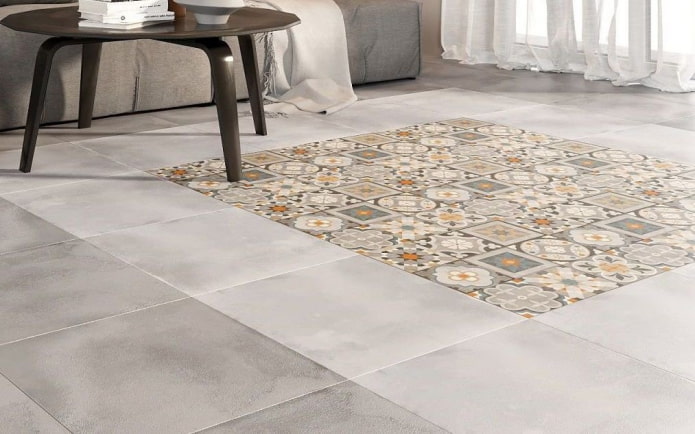
 10 practical tips for arranging a small kitchen in the country
10 practical tips for arranging a small kitchen in the country
 12 simple ideas for a small garden that will make it visually spacious
12 simple ideas for a small garden that will make it visually spacious
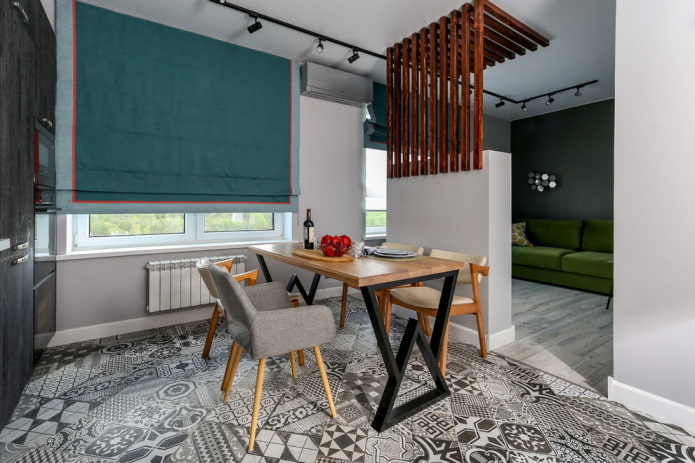
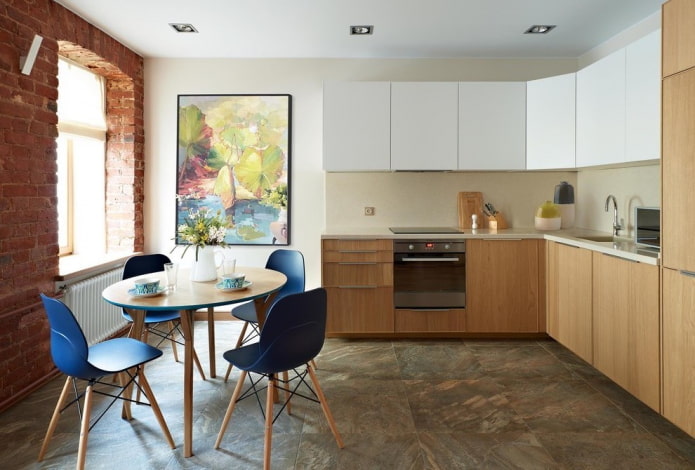
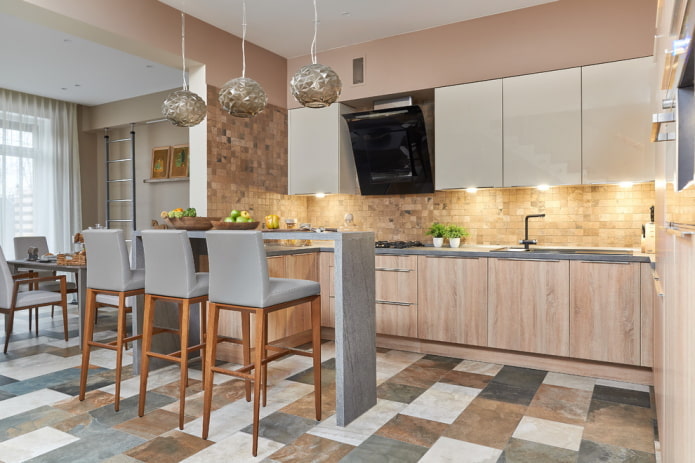
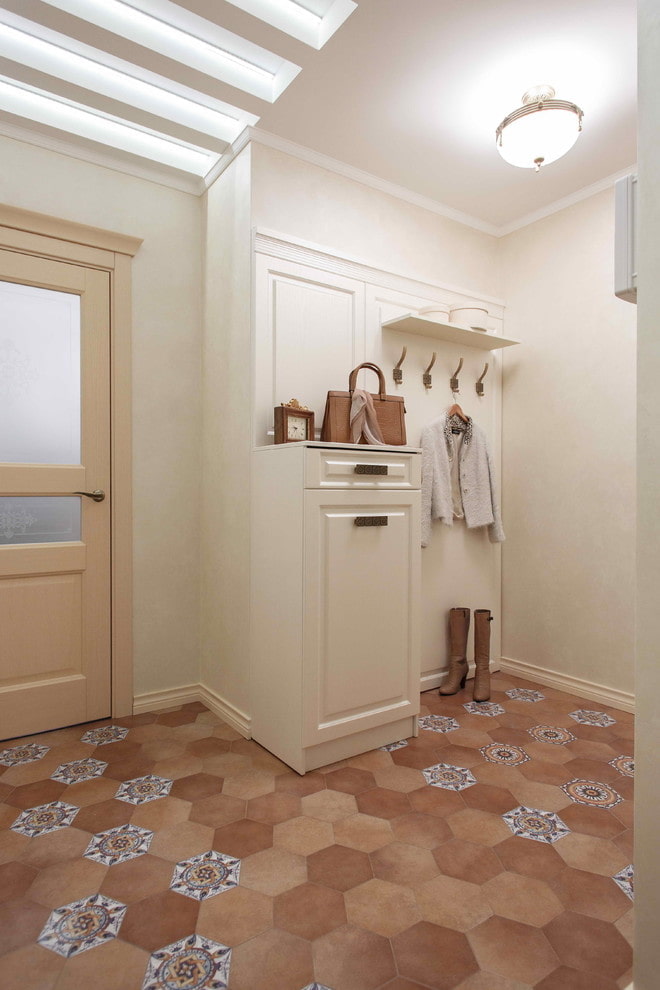
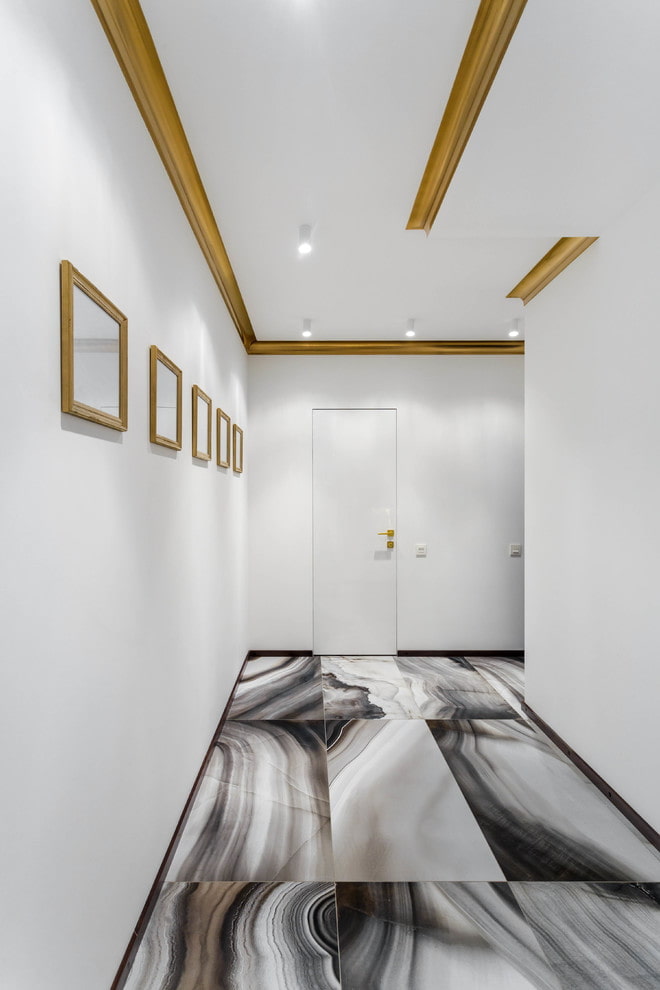
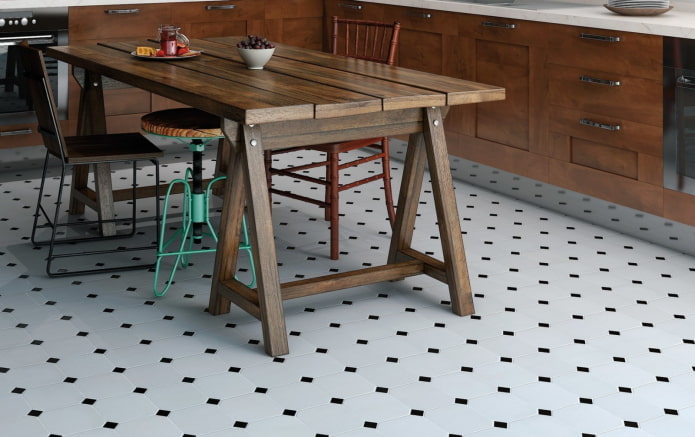
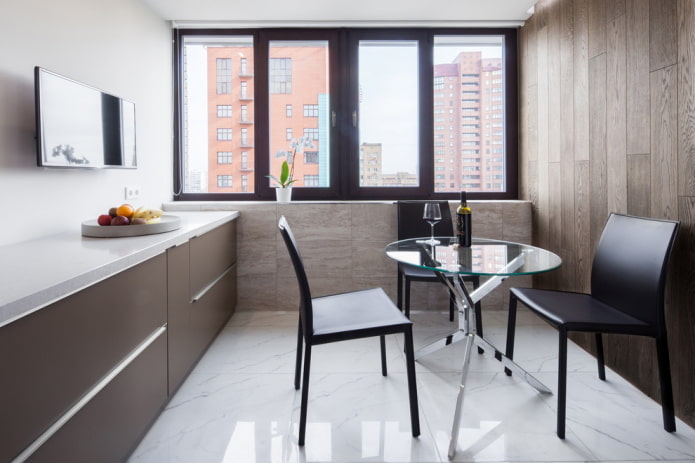
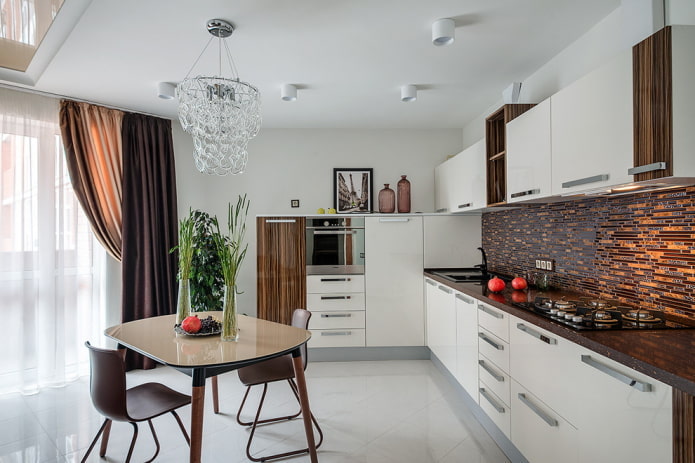
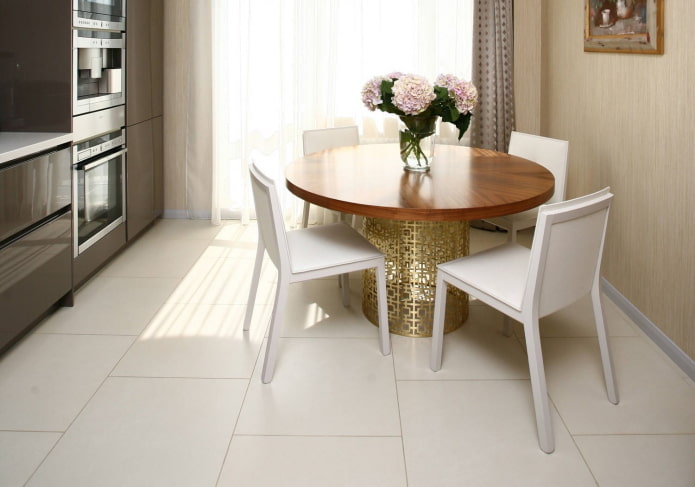
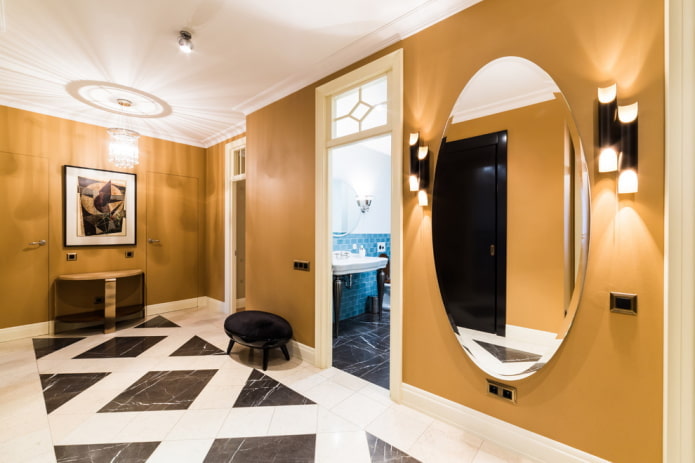
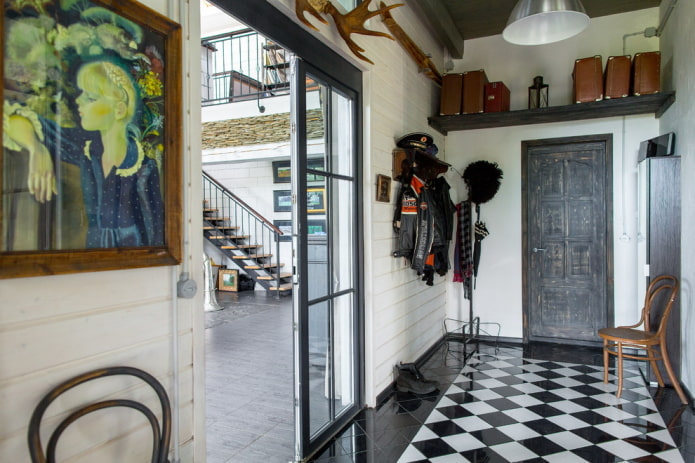
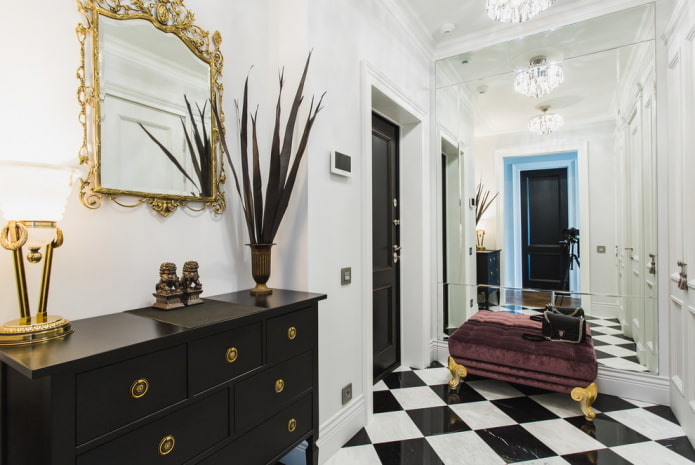


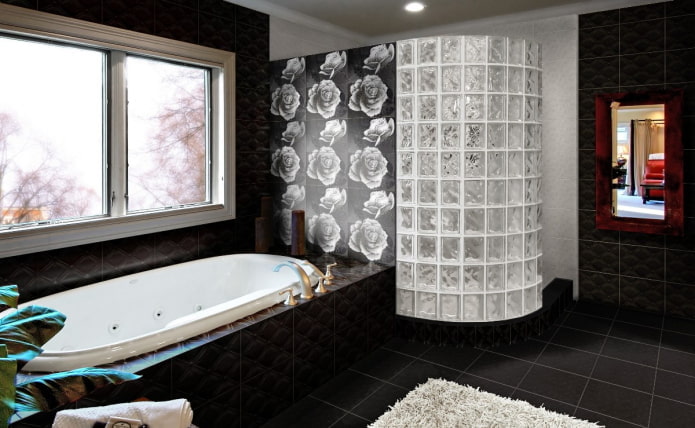
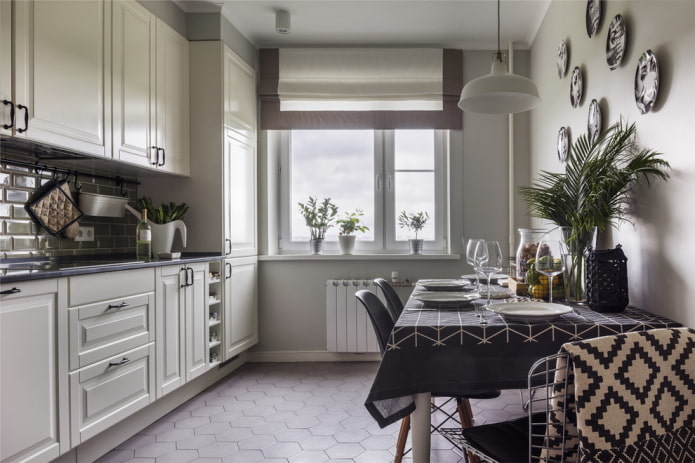
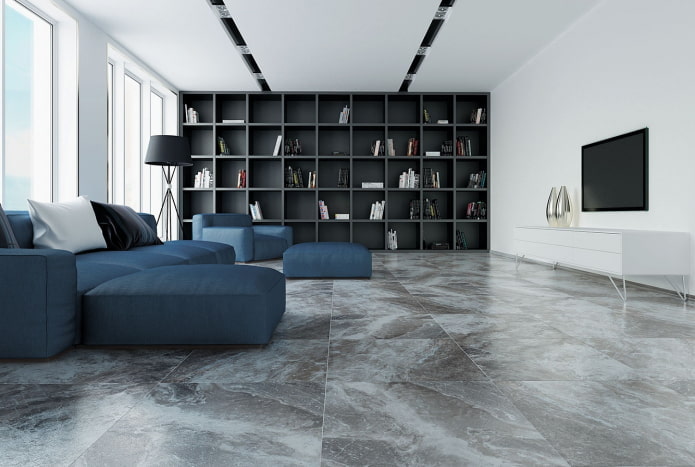
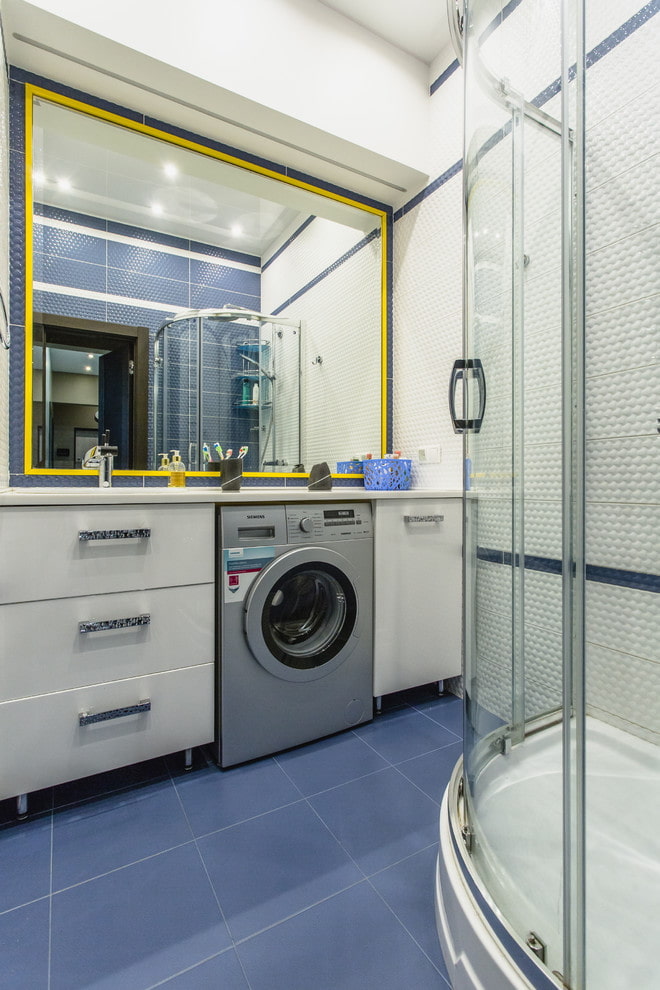
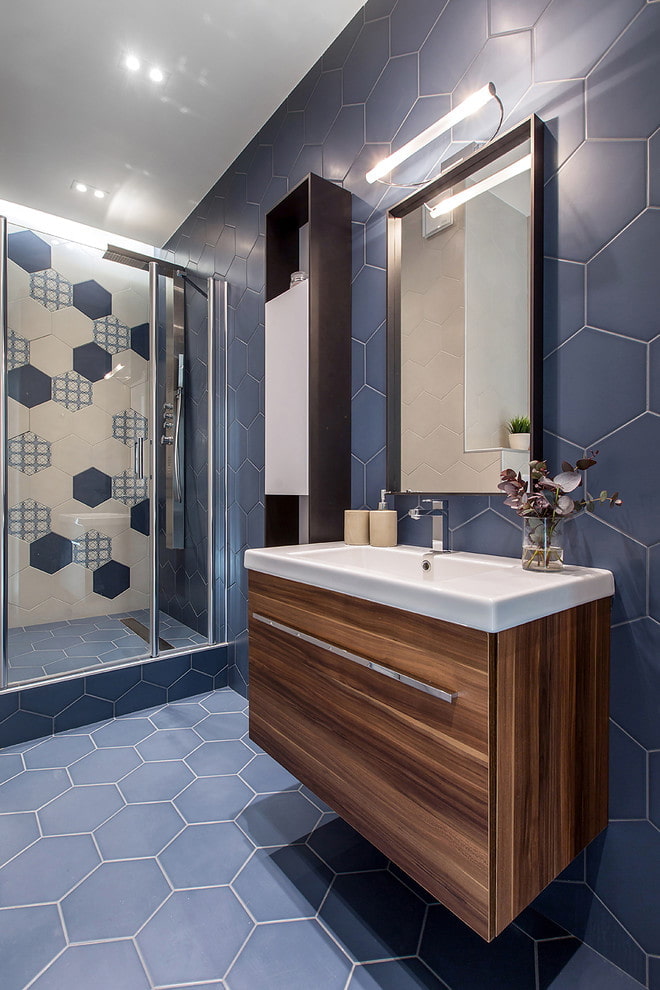

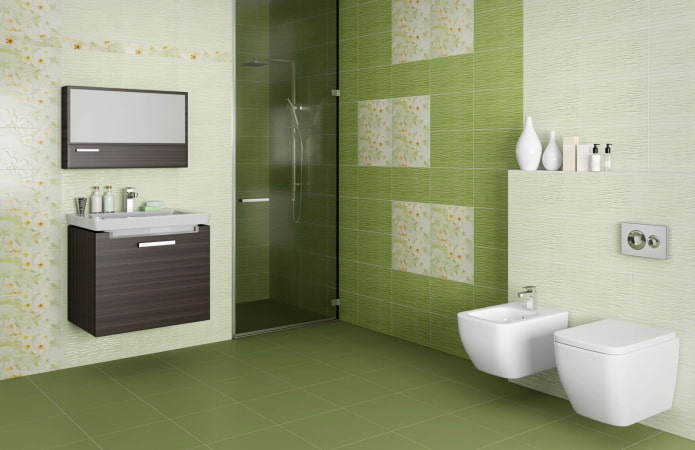


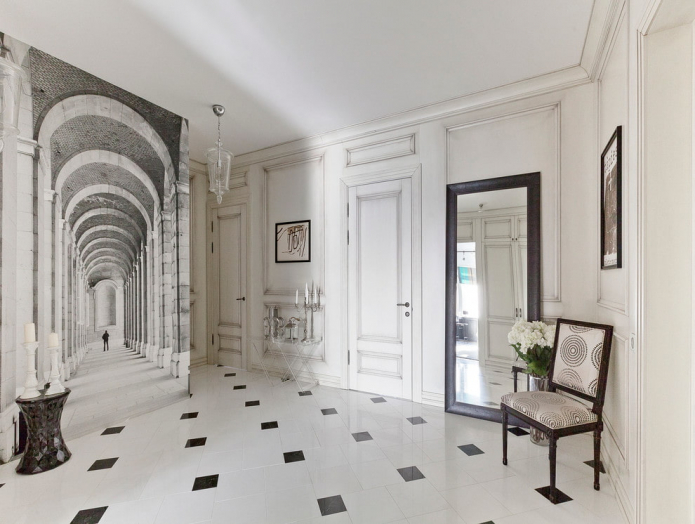
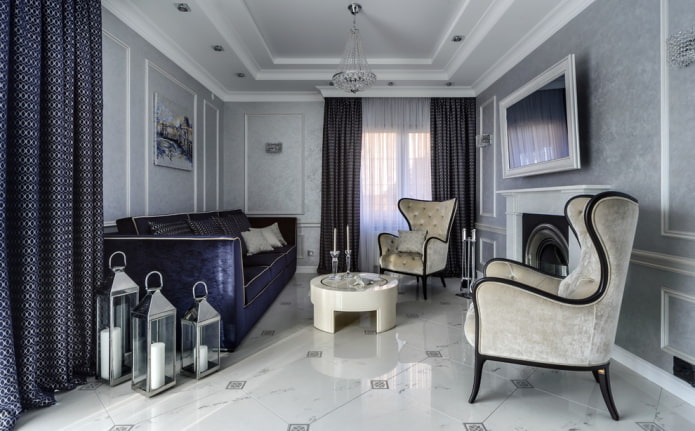
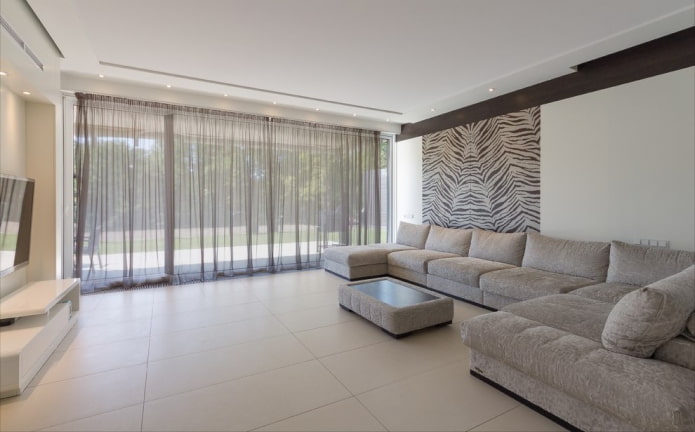
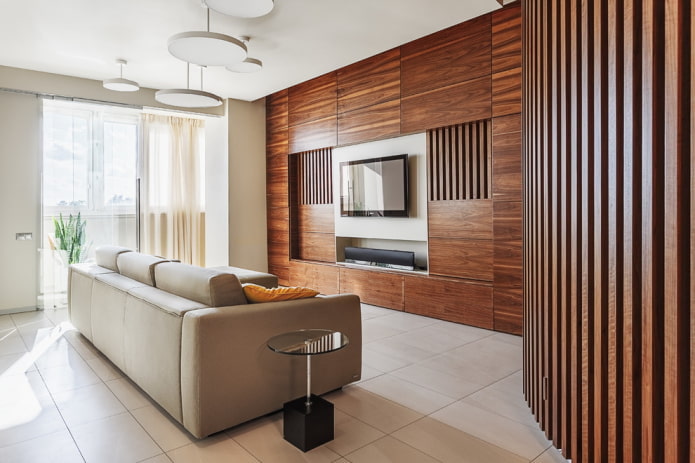
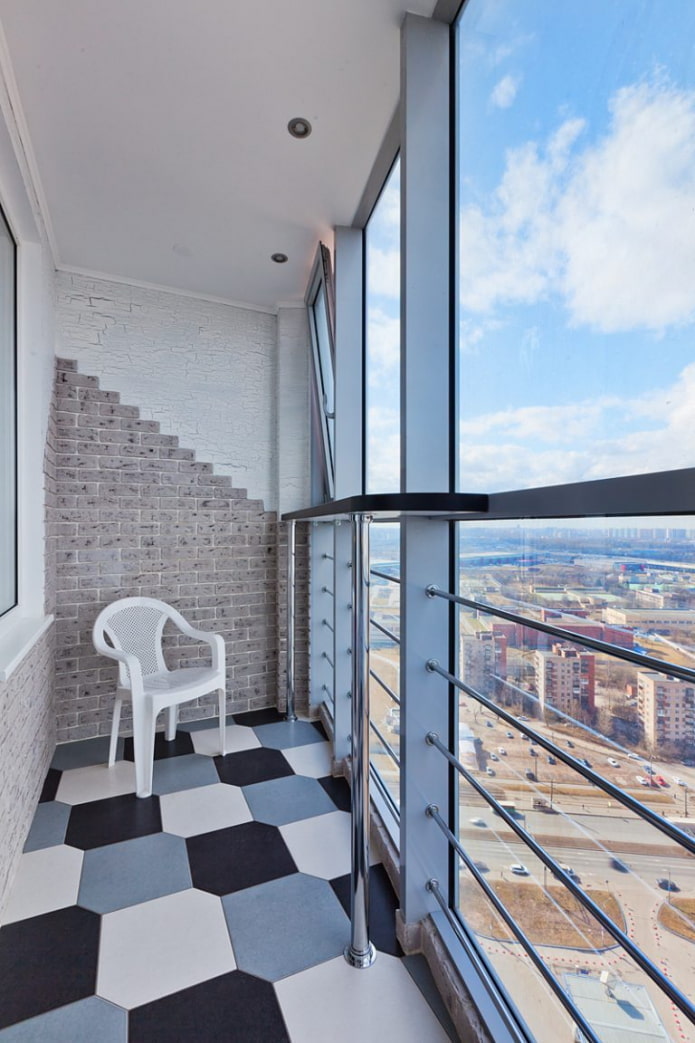
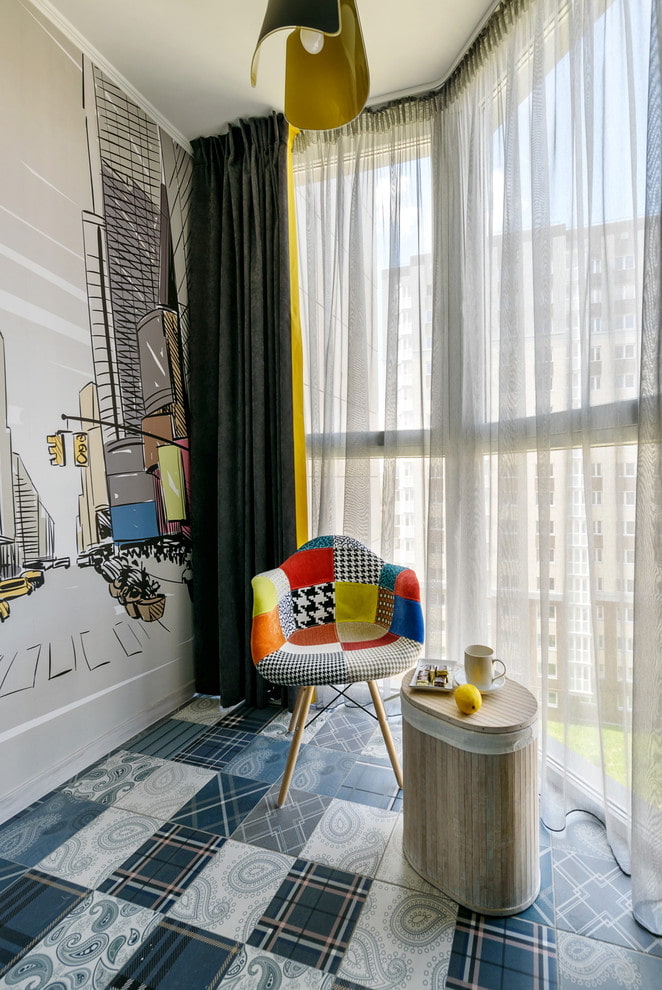
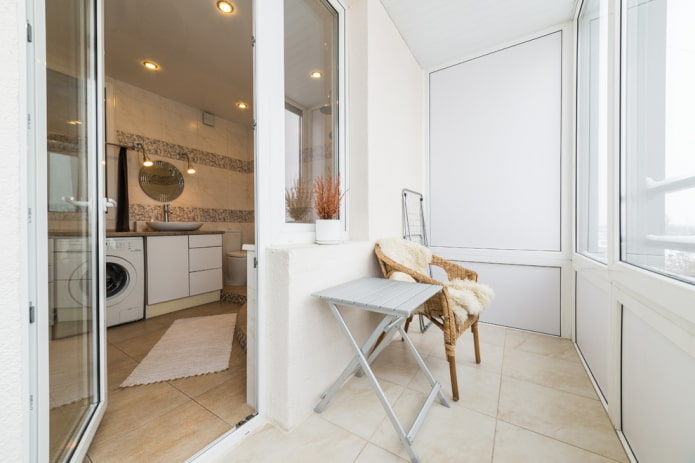
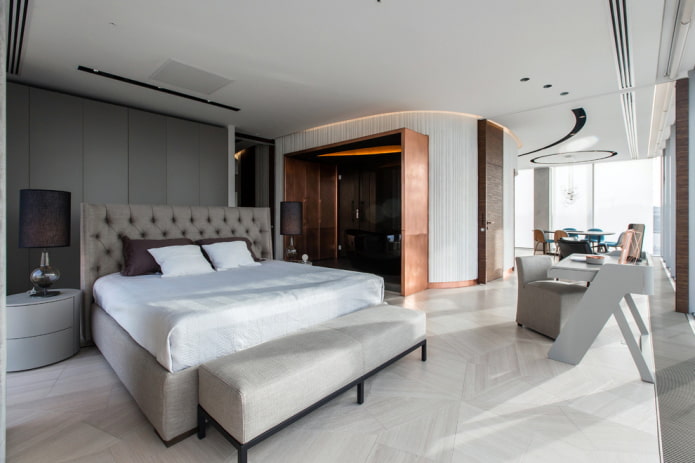
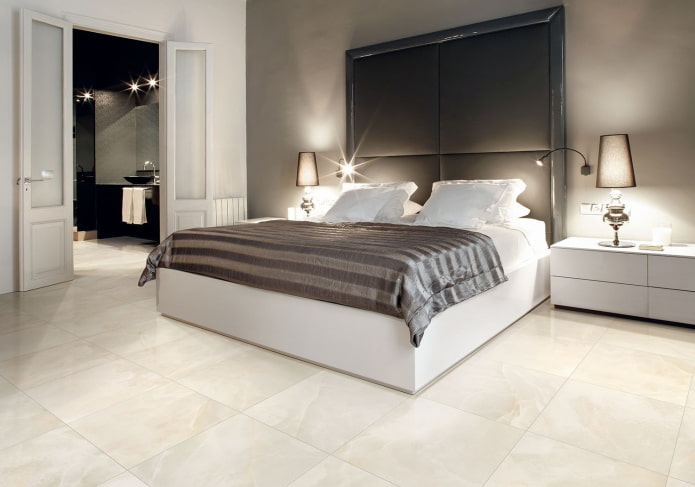
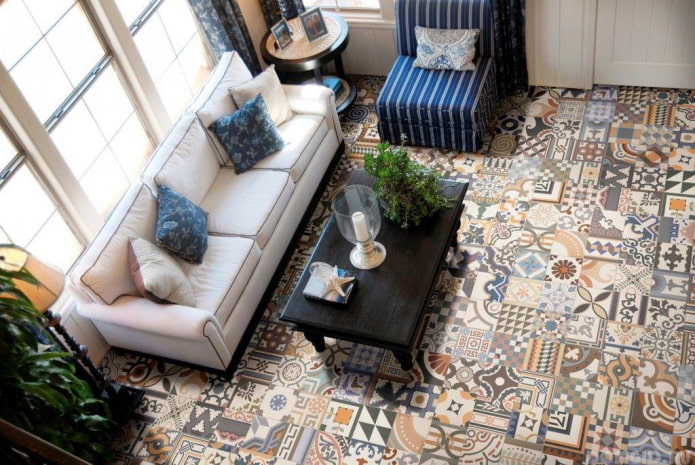
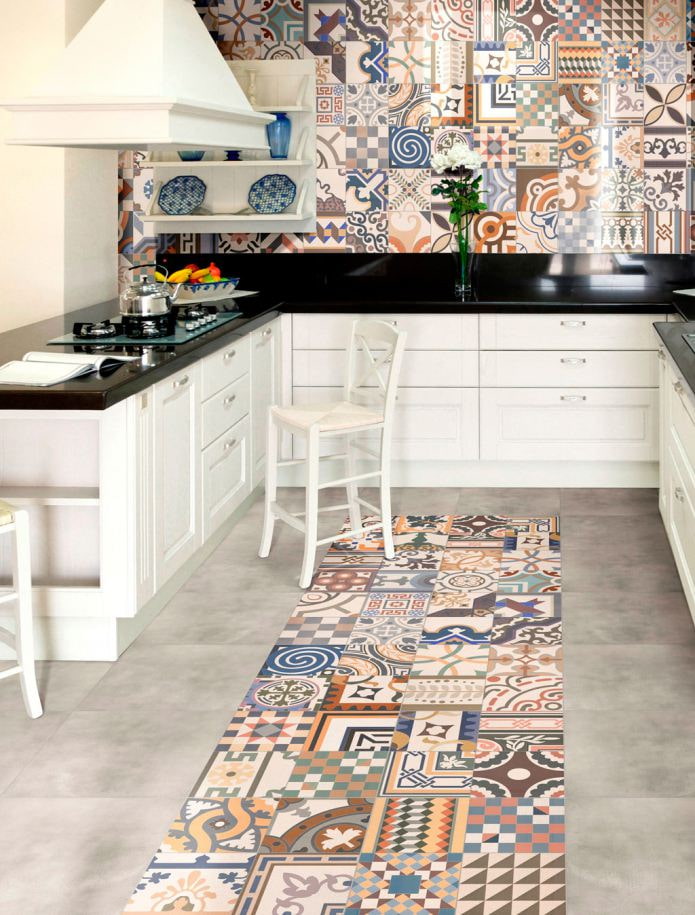
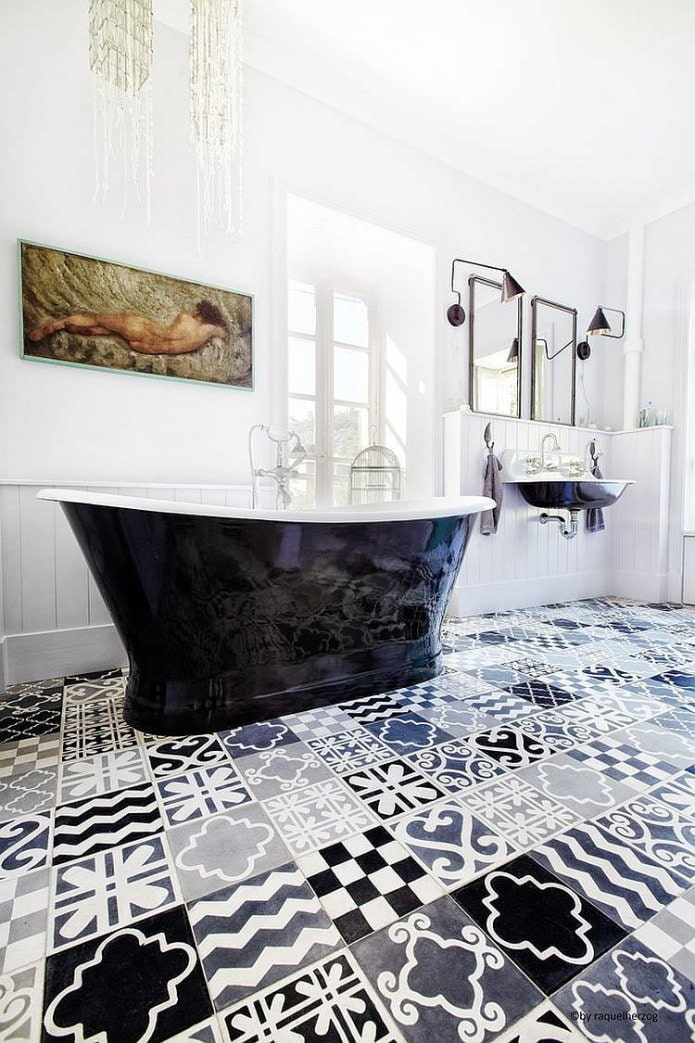
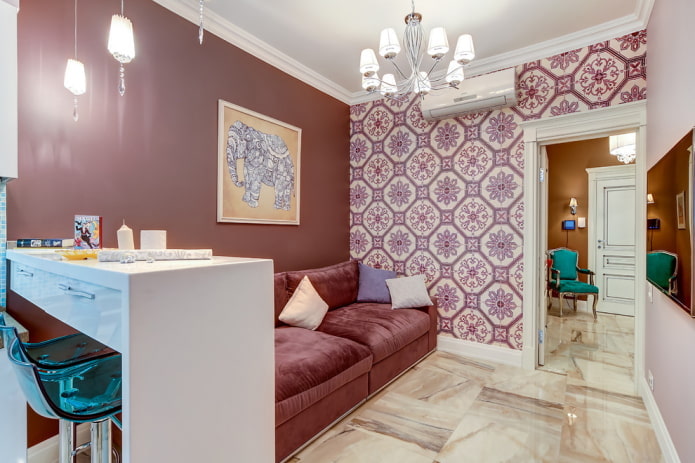
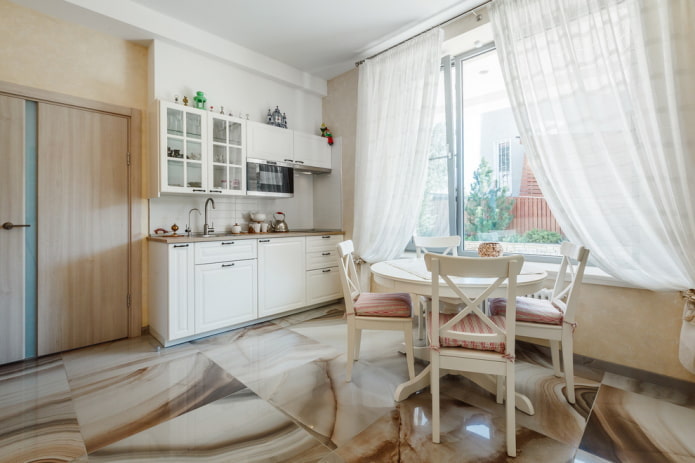
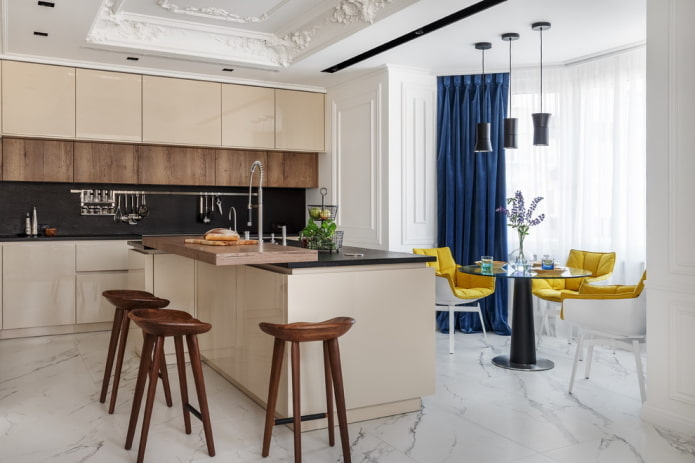
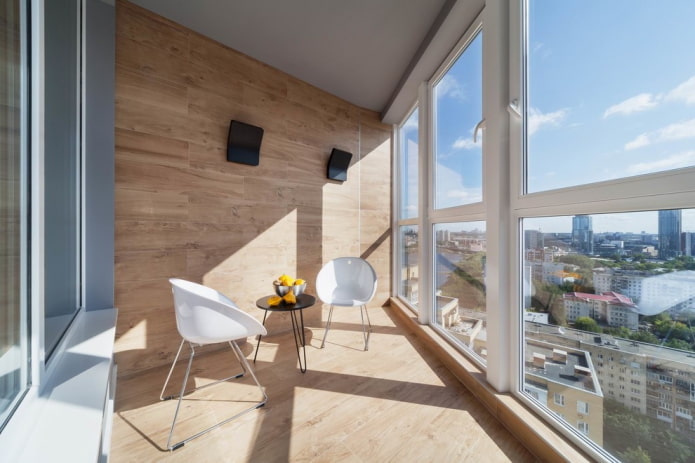
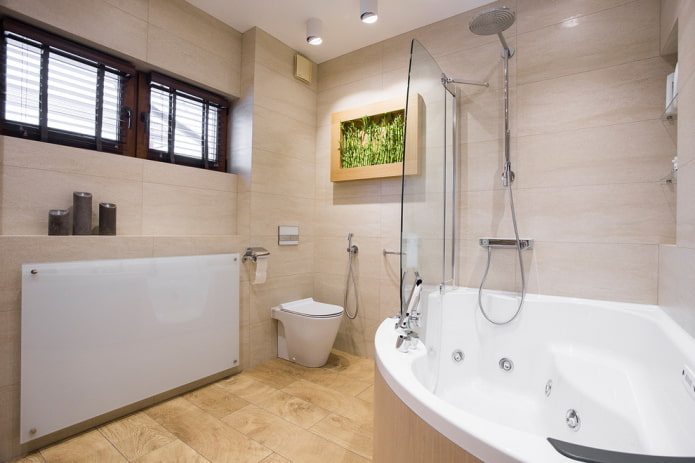

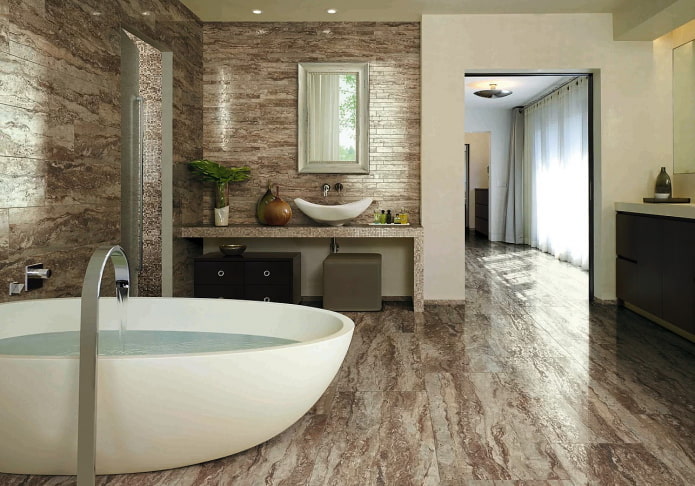
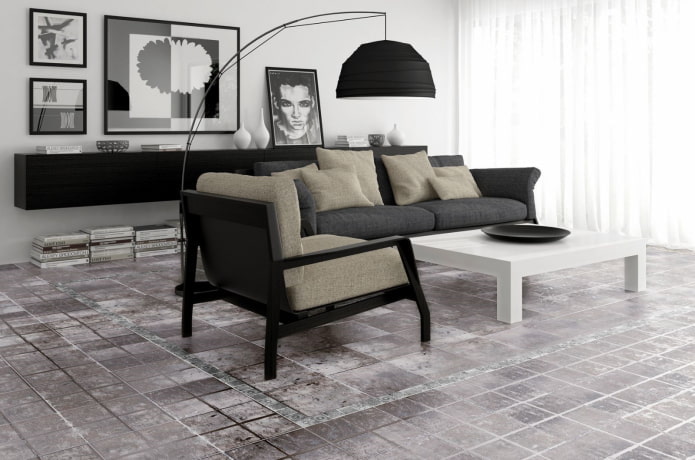
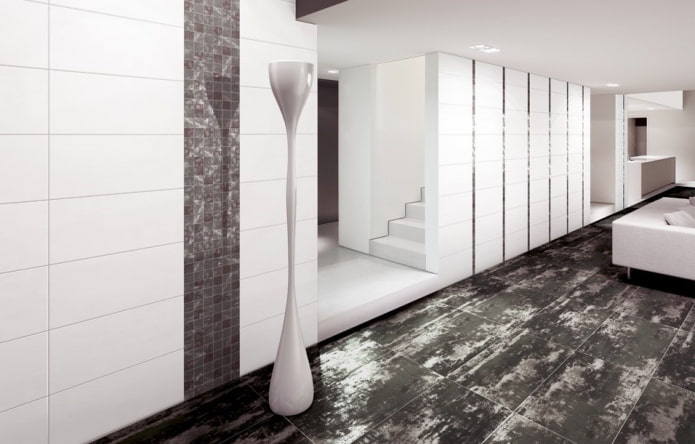
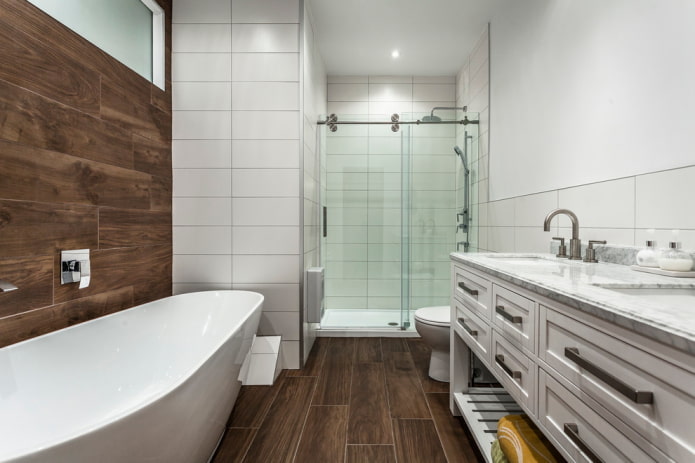
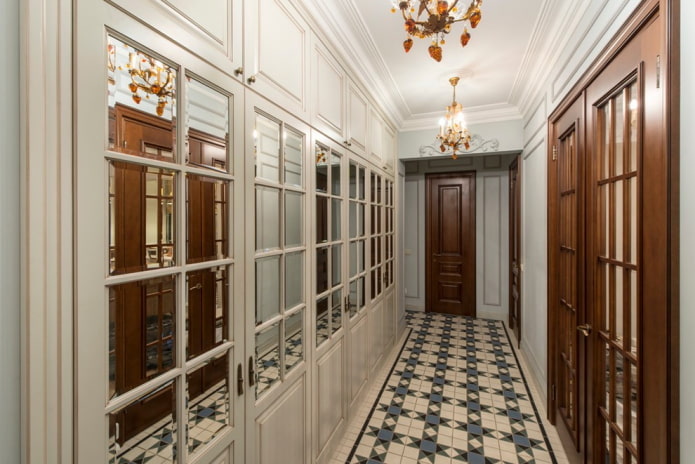
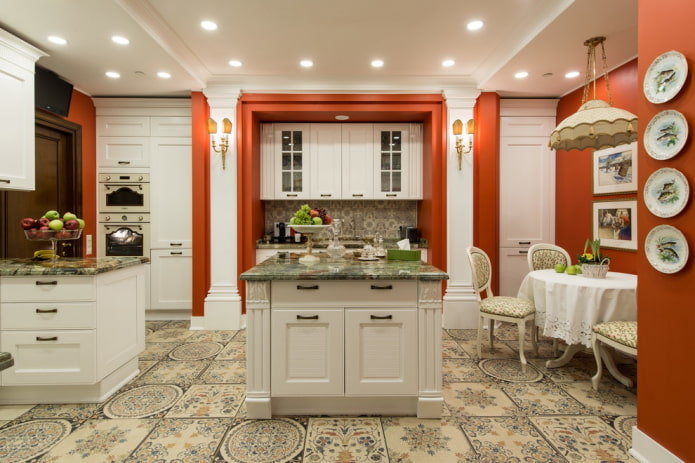

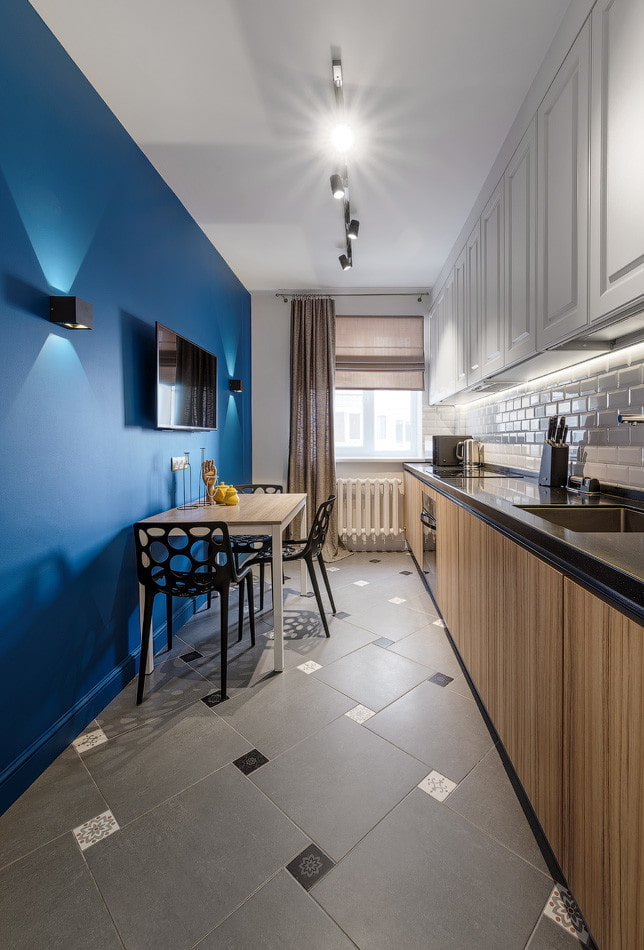
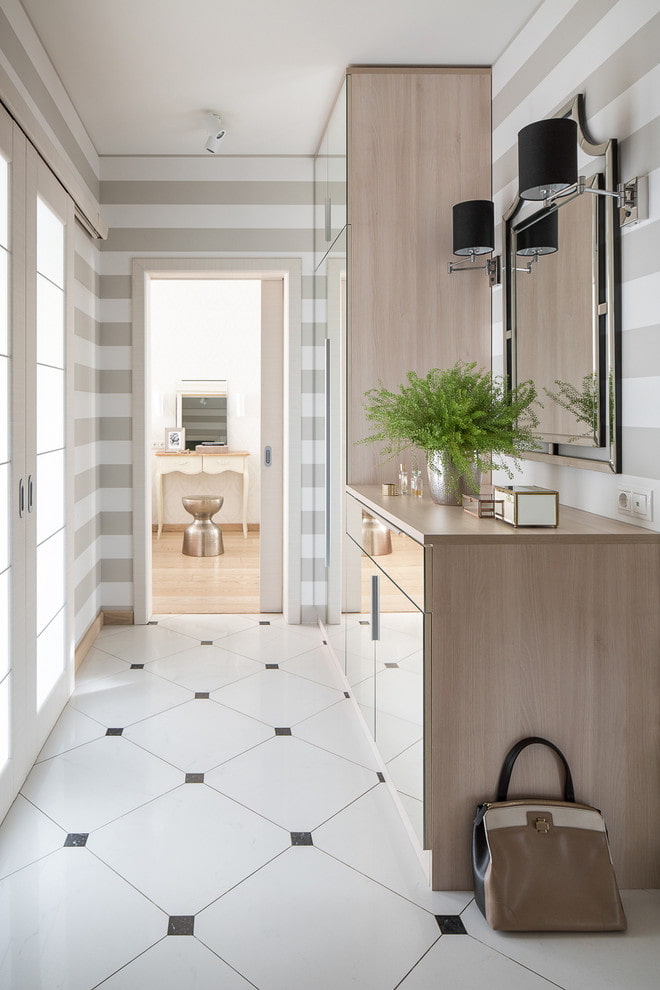

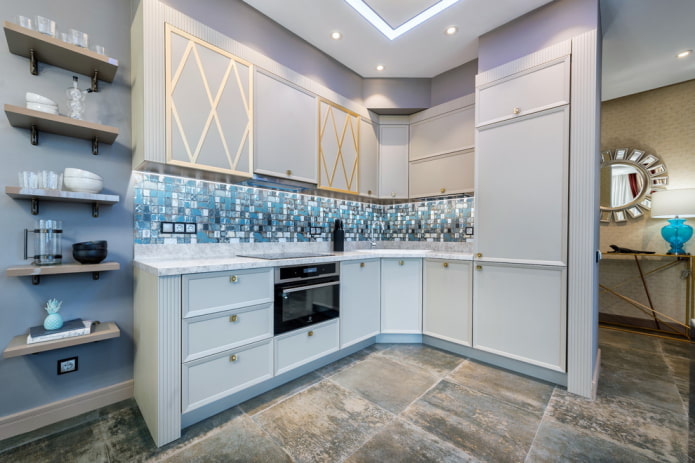

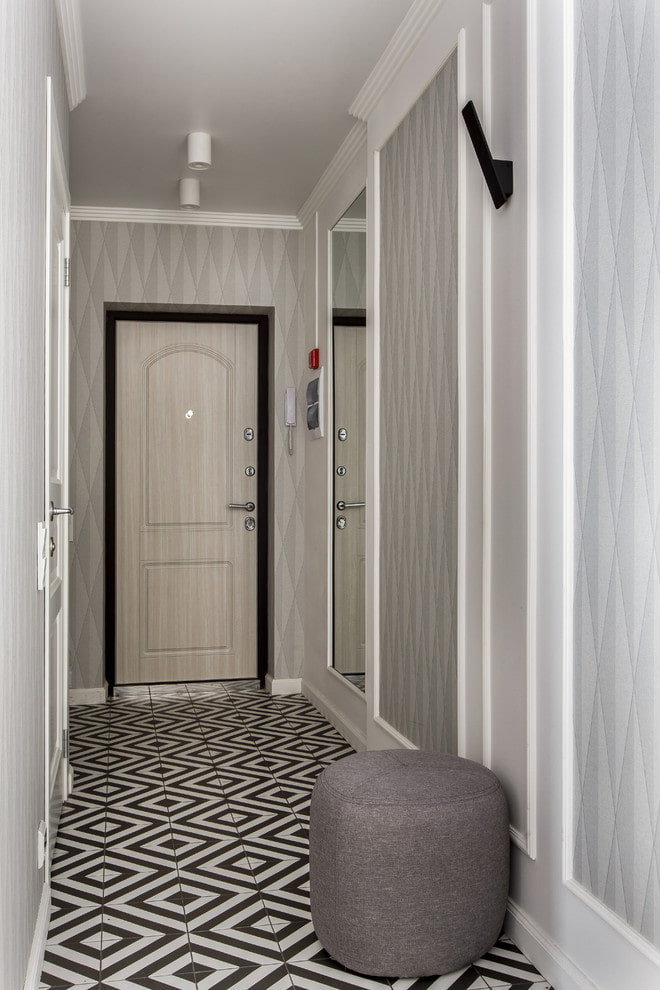

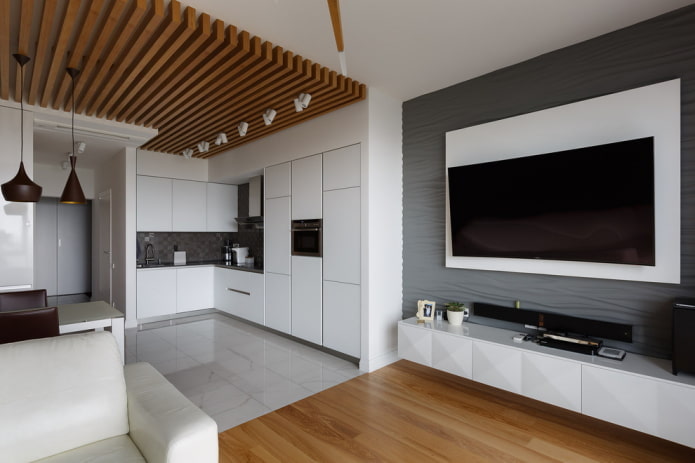
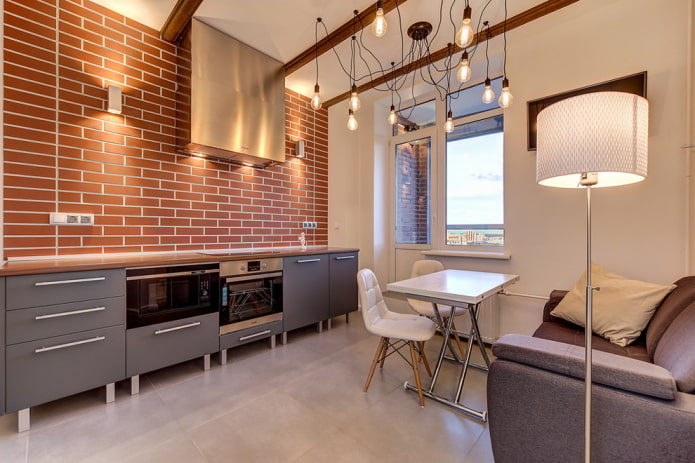
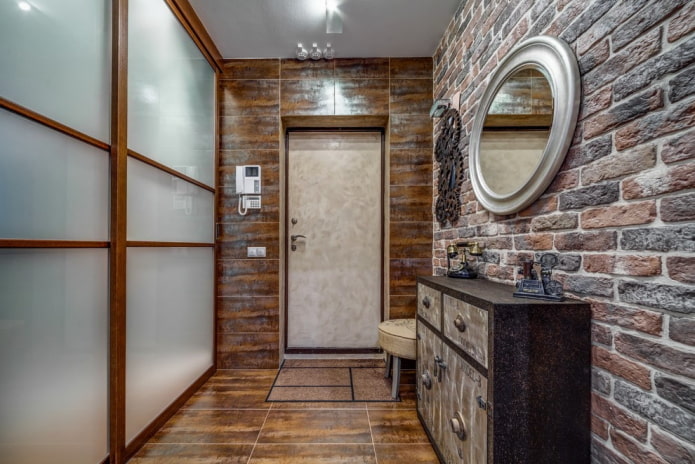


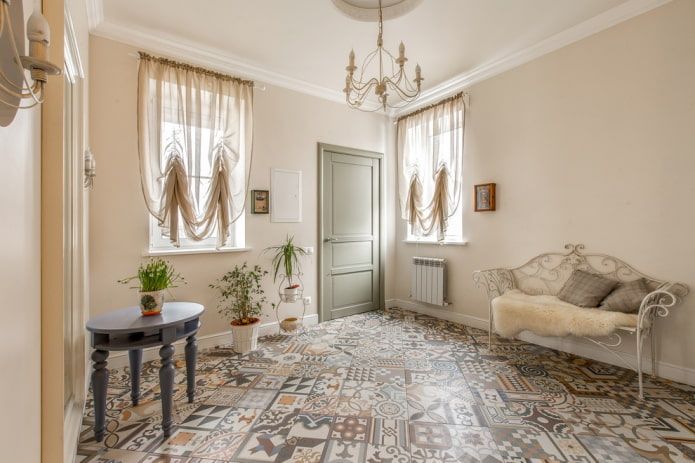
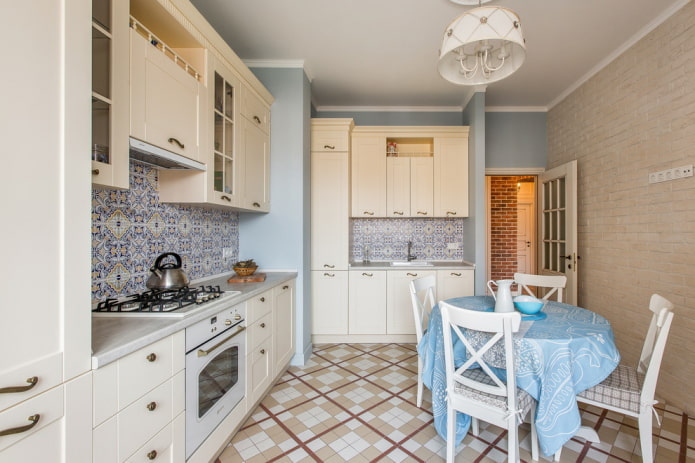
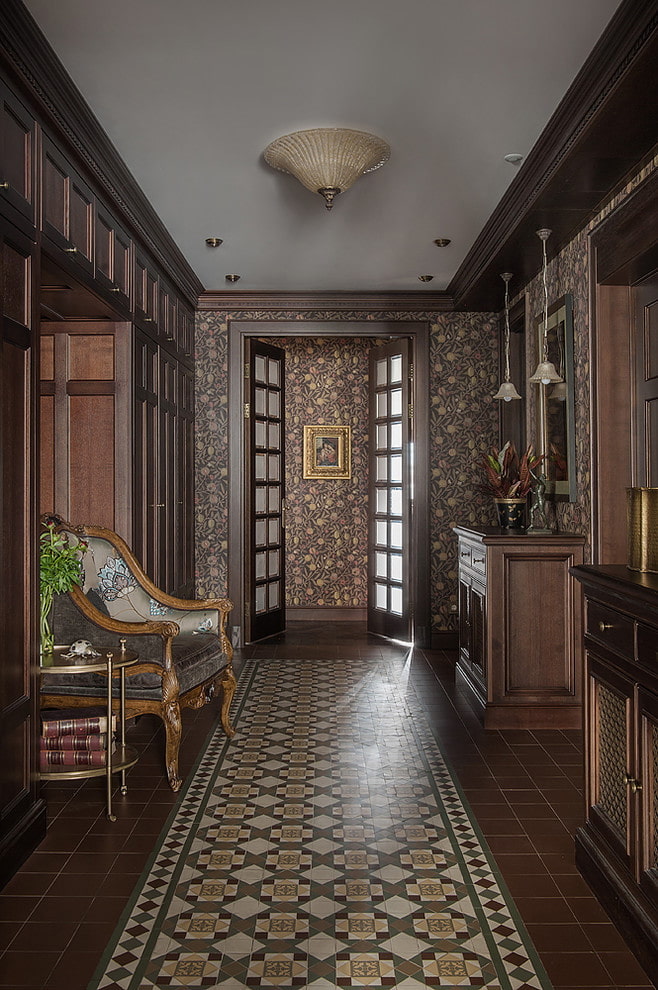
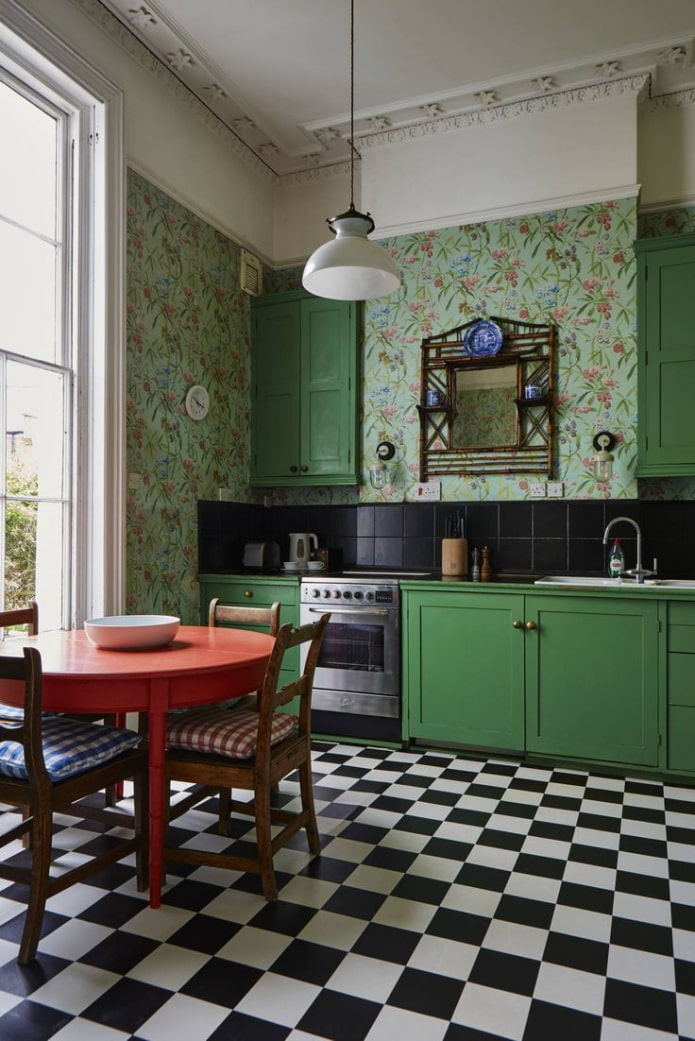
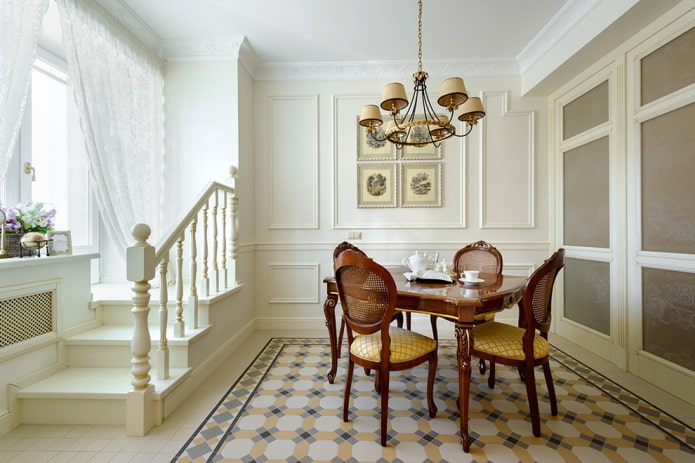
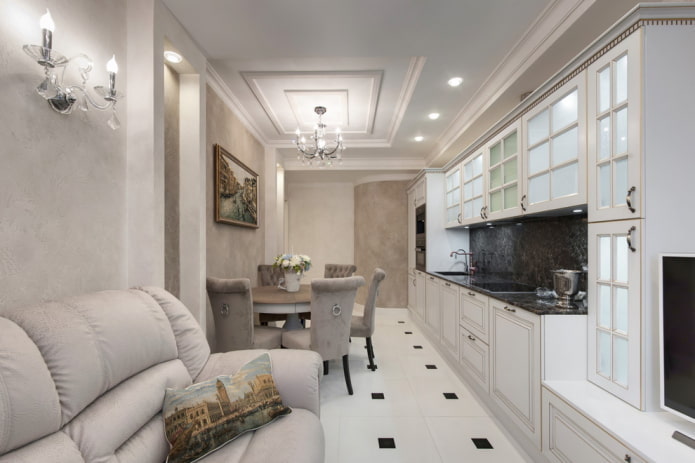
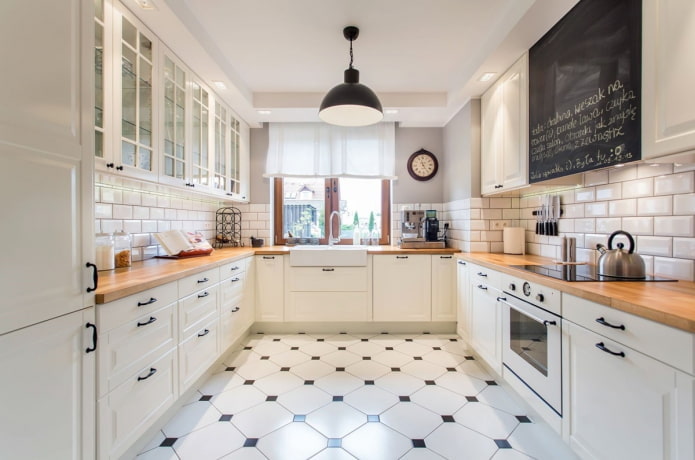


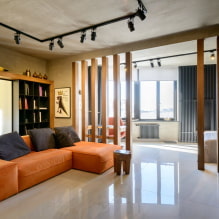

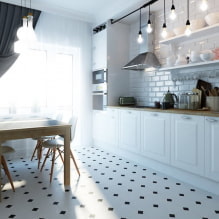
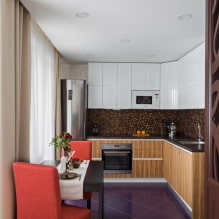
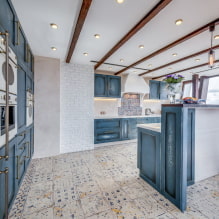
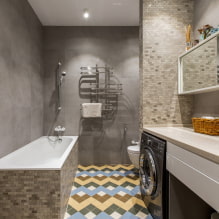
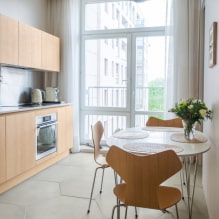
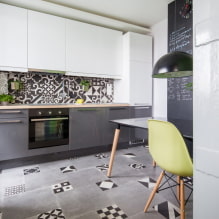
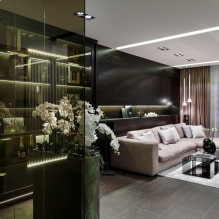
 13 bad habits a good housewife shouldn't have
13 bad habits a good housewife shouldn't have 24/7 home cleanliness - 4 secrets for the perfect housewife
24/7 home cleanliness - 4 secrets for the perfect housewife 6 hotels in Sochi that will give odds to the promoted foreign hotels
6 hotels in Sochi that will give odds to the promoted foreign hotels Top 10 interior design trends 2020
Top 10 interior design trends 2020 Rating of cheap TVs with Smart-TV
Rating of cheap TVs with Smart-TV New Year's LED garlands on AliExpress - we disassemble while it's hot, so that it's bright at home
New Year's LED garlands on AliExpress - we disassemble while it's hot, so that it's bright at home